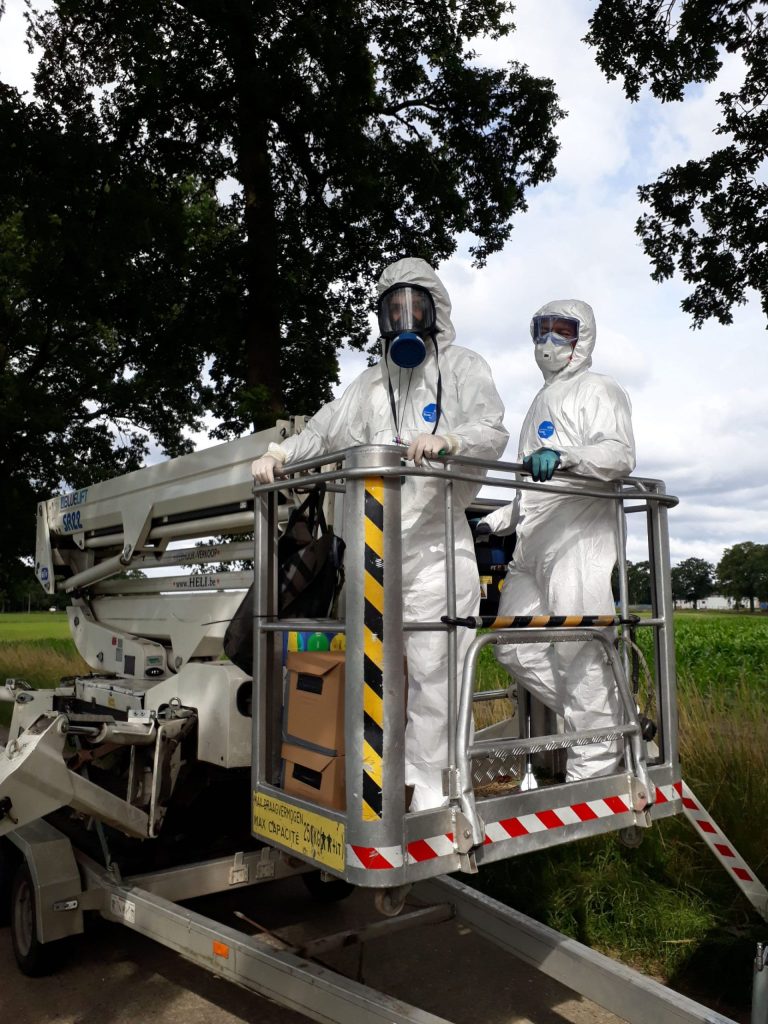Prevention
Prevention measures per target group
Different target groups come into contact with the caterpillars and can take preventive measures.
Professionals
In the context of their profession, various people may come into contact with oak processionary caterpillars and their irritant hairs. During pest-control processes, the environmental workers, contractors and fire-fighters may be exposed to the caterpillars’ hairs. Road maintenance teams for roads, avenues of trees (oaks) and verges, however, are also high-risk groups.
Use suitable personal protective equipment, including rubber gloves, boots, an overall which is tight around the wrists and ankles, and a full-face mask. An overview of the necessary protective equipment can be downloaded below.
Protective equipment

General population
The general population may also come into regular contact with the oak processionary. They use the roads and lanes where infected oak trees may be located or locations (e.g. camp sites) where there may be many oak trees. This group includes walkers, cyclists, sports people, playing children and other people enjoying recreational activities. When near infected trees, it is best to cover as much of the body as possible.
People are advised to avoid direct contact with caterpillars, (old) hairs, web-like nests, and shed caterpillar skin as much as possible. Even those who do combat the oak processionary in a non-professional way are strongly advised to use good protective equipment. A well-fitting overall, a dust mask and goggles, gloves and boots are vital in order to avoid any irritation.
Youth and children
Young people and children are a significant group when it comes to playing and camping in fields and woodland. Children must be told about the risks of coming into contact with oak processionary caterpillars. When visiting a (natural) area with caterpillars, you are advised to cover the neck, arms, and legs and to avoid sitting on the ground.
Animals
There is also a risk for cattle that find themselves in the vicinity of contaminated trees, grass or even when they are fed silage that is contaminated with the hairs. There is also a significant risk for dogs off the lead, if they push their noses into large nests.
General
After contact with the caterpillars or hairs, you are advised not to itch or rub the area, but to wash or rinse the skin or eyes thoroughly with water. More information about the symptoms and possible treatments can be found on the poison control centre website.